This travel wiki page of Mauritius will help guide travelers with quick and relevant information to consider when planning and visiting the country. It is difficult to find all the relevant information on Mauritius culture, safety, travel restrictions, and things to do, so we summarize it all here. If anything is stale or outdated, please let us know! Let’s dive in and explore more high-level information as a Mauritius trip planner.
Last updated March 27th of 2023.
Table of contents
National Information & Culture
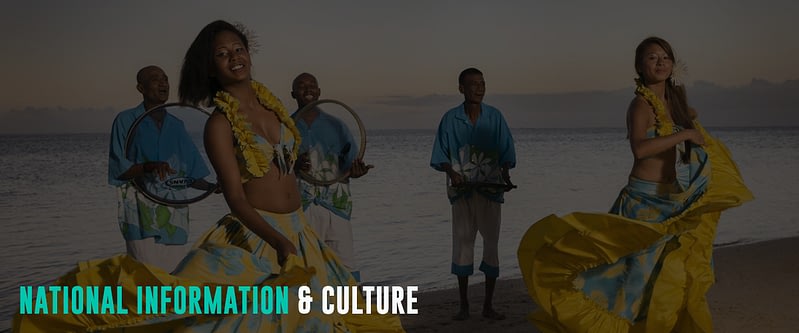
Mauritius, officially the Republic of Mauritius, is an island country in the Indian Ocean, off the southeast coast of the African continent and east of Madagascar. It comprises the main island called Mauritius, Rodrigues, Agalega, and St. Brandon. Among the islands, the most highly populated is Mauritius, which also hosts the capital and largest city of Port Louis. On the other hand, the country’s official tender is the Mauritian Rupee (MUR).
Mauritius is rated high-income by the World Bank and Africa’s most competitive and sophisticated economy. Also, Mauritius is the only country on the continent with a “very high” Human Development Index. In addition, the nation is a welfare state, providing free universal healthcare, education up to the tertiary level, and public transportation for students, older and persons with disability.
Mauritian culture is heavily influenced by its diverse population of Indian, African, Chinese, and European ancestry. These result in a unique blend of customs, faith, and traditions. Mauritius is the only country in Africa where most of the population practice Hinduism as a religion. Lastly, Mauritius has a conservative society. Hence, tourists should dress modestly in public and keep swimwear in the beach area.
Visit Mauritius Official Tourism Website and Mauritius Tourism Promotion Authority for more information and tips when planning your trip.
Special Travel Considerations

Each country and destination has rules and regulations that every traveler must consider. Hence, check the following considerations for hassle-free travel to Mauritius.
Covid-19 Policy
As of July 1, 2022, Mauritius has lifted all entry requirements related to Covid-19. Hence, Covid-19 testing, vaccination certificate, or isolation is unnecessary to enjoy a holiday on the beautiful island of Mauritius and explore freely from day one.
However, the Covid-19 protocol of Mauritius may vary over time with the evolution of the pandemic. Therefore, check the latest travel and entry requirements when planning your trip.
Travel Insurance
Travel and health insurance are not mandatory for visitors to enter Mauritius. However, it is advisable to have one that covers emergency medical treatment, including Covid-19, repatriation, and evacuation. Travel insurance can protect you against the inconvenience of injury, medical emergencies, theft, and flight cancellations. In addition, it is a comprehensive protection in case anything goes wrong with your trip.
Visa Information

Nationals of most countries do not need a visa or may obtain a permit on arrival to Mauritius for tourism purposes. Meanwhile, citizens of 14 countries must get a gratis visa from the nearest Diplomatic / Consulate Representative before traveling to Mauritius. Visitors can also check their visa eligibility according to their country’s issuing passport.
Aside from a visa, all travelers to Mauritius must have a valid passport beyond their stay, return or onward ticket, proof of accommodation, and sufficient funds ($100 daily). Visitors must also sign a pledge not to engage in business.
Mauritius All-in-One Travel Digital Form
To avoid delays at the airport, all travelers to Mauritius are advised to fill out the All-in-One Travel Digital Form before their flight to screen for infectious diseases, including COVID-19 public health surveillance. Once completed, print the generated QR code to be presented to Health Officials on arrival at Mauritius Airport. Meanwhile, foreign nationals who have not filled out the All in One travel form must fill out an Immigration Disembarkation Card on arrival at the airport.
Popular Attractions
Mauritius is famed for its sapphire waters, powder-white beaches, and luxury resorts. Moreover, the country is also a leader in wildlife tourism and outdoor adventure.
Port Louis
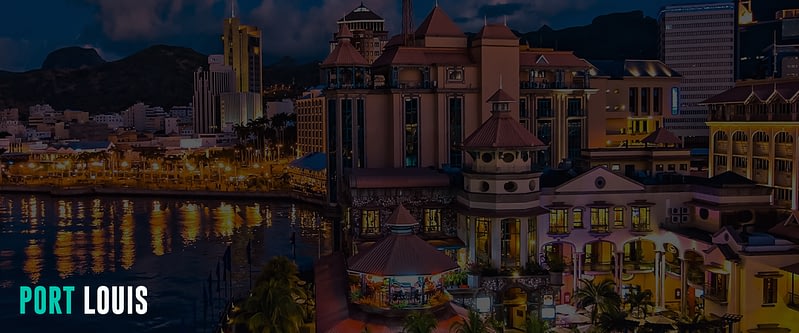
The vibrant and colorful capital city of Port Louis is a must when visiting Mauritius. Port Louis is a city where the ancient and the modern meet, with a rich cultural history of the Mauritian population. It has preserved many historical and colonial buildings. It includes Fort Adelaide, built by the British in 1835, and overlooks the city. Moreover, the city center features several French-style buildings, religious monuments, and founders’ statues. Visitors can also explore the Mauritius Natural History Museum and the Mauritius Stamp Museum, all located in the city.
The main tourist attractions in Port Louis include the Caudan Waterfront, Port Louis Bazaar, Police Barracks, the old Port Louis Theatre, and the Champ de Mars racetrack. However, the most famous attraction is the colorful and lively market offering everything from peculiar fruits to traditional Mauritian clothing and street food. Visitors can also gain height and enjoy stunning city views from the Citadel or the Marie Reine de la Paix monument.
Aapravasi Ghat
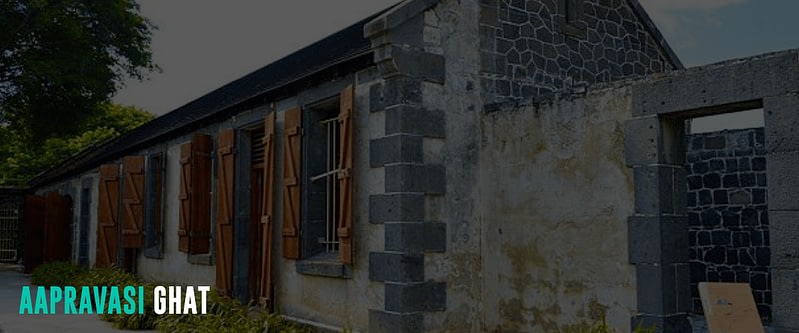
The UNESCO World Heritage Site of the Aapravasi Ghat on the bay of Trou Fanfaron is the remains of an immigration depot in 1849. The Depot was erected to welcome indentured laborers from India, Eastern Africa, Madagascar, China, and Southeast Asia as part of the ‘Great Experiment’ on the island’s sugar fields.
Aapravasi Ghat’s structures are among the earliest explicit expressions of what would become a worldwide economic system. It represents not only the evolution of the modern design of contractual labor but also the memories, traditions, and values that these people carried with them when they left their countries of origin to work in foreign lands and which they subsequently bequeathed to their millions of descendants, for whom the site holds great symbolic significance.
Blue Penny Museum
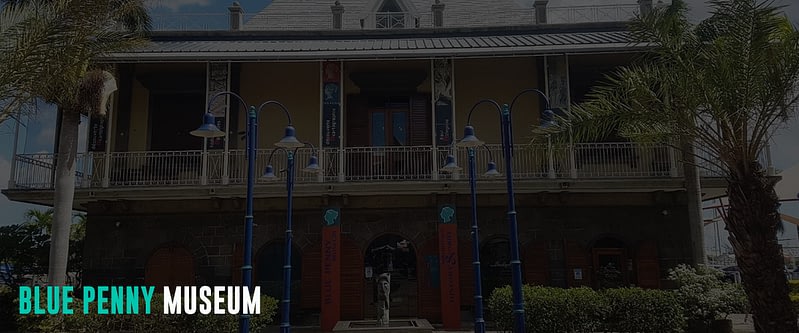
The Blue Penny Museum in Port Louis, named after the world-famous Mauritian one and two penny stamps from 1847, features many intriguing exhibits. It includes the island’s history, discovery, colonization, and the height of the colonial period. Moreover, history lovers will love the stories, antique maps, photographs, and Mauritius’ most famous statue.
The famous stamps are located on the first floor. They are considered a national treasure and are lit for ten minutes every hour to preserve their vibrant red and blue colors.
Grand Baie
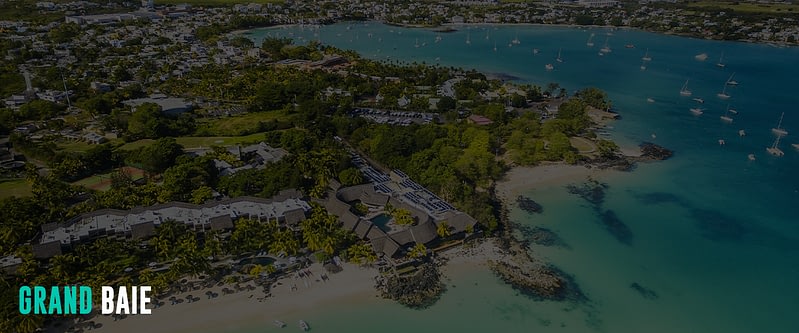
Grand Baie, or Grand Bay, a coastal town north of Mauritius Island, is a popular destination for tourists and locals. The area is the central tourism hub on the island. It is famous for its powdery white sand beaches and sunny climate, perfect for water activities. The village of Grand Baie is also trendy, with plenty of entertainment options like restaurants, pubs, casinos, and nightclubs.
Among the other popular attractions in Grand Baie are the Aquarium and interactive L’Aventure du Sucre museum, while water lovers can try diving, waterskiing, sailing, and windsurfing. Visitors can also explore the nearby La Cuvette beach and the Balaclava Ruins.
Black River Gorges National Park
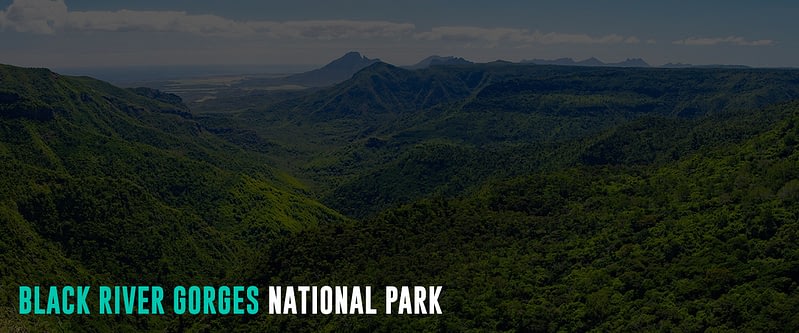
Black River Gorges National Park is a vast natural reserve in the southwestern part of Mauritius. Covering over 6,000 hectares of land, the park was created to protect the island’s natural vegetation and wildlife, making it an important place to visit in Mauritius. Among the many species of wild animals and endemic birds in the park are the giant fruit bats, Mauritius kestrel, pink pigeon, Mauritius parakeet, Mauritius cuckoo shrike, Mauritius bulbul, Mauritius olive white-eye, Mauritius grey white-eye, and Mauritius fody. Because of this, the park has been designated an Important Bird Area (IBA) by BirdLife International. Moreover, the park also features many panoramic views of the island’s gorges, mountain peaks, and waterfalls.
Visitors can explore the park with its 60 kilometers of trails and enjoy facilities, including two information centers and picnic areas. The park also offers many opportunities for nature lovers to discover the native forests and wildlife. The island’s highest point, Black River Peak, can be reached by hiking through the greenery.
Chamarel

Chamarel, a village in Rivière Noire District, is a popular tourist destination due to its unique geological wonder. The town boasts of the Seven Colored Earth, a group of dunes displaying seven distinct colors, including red, brown, violet, green, blue, purple, and yellow. The Seven-Colored Earth phenomenon results from cooling volcanic rocks at different temperatures. Also, the colors of the dunes vary depending on the climate and the time of day.
The village also offers stunning views of the Chamarel Falls, considered one of Mauritius’s best and longest waterfalls. The waterfall drops down from a height of 100 meters, forming a natural pool at the bottom. Visitors can view the stunning waterfalls and its surrounding from a platform at the top. The falls are in the Black Gorges National Park, and visitors often combine the visit with the Seven Colored Earth.
Pamplemousses Botanical Garden
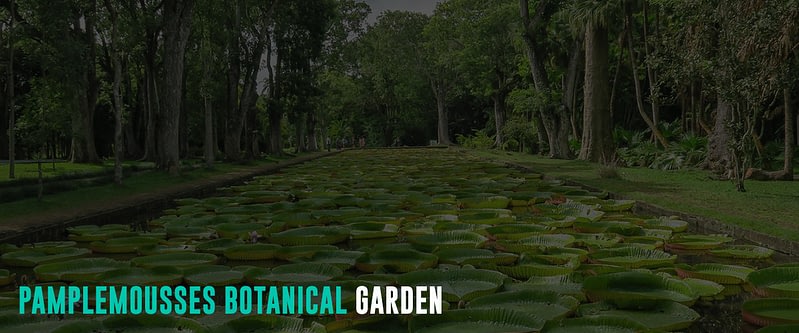
Pamplemousses Botanical Garden, also known as Sir Seewoosagur Ramgoolam Botanical Garden, is one of the world’s oldest. It features over 650 varieties of plants and trees, including the famous giant water lilies. The garden is mainly filled with palm and fruit trees, including some endemic species. However, the garden’s photogenic attraction is its giant water lilies, the Victoria amazonica, blooming white and closing red the next day. Furthermore, the park is home to the Madagascar fody bird species and the Aldabra tortoise, making it a popular destination for bird and animal lovers.
Île aux Cerfs Island
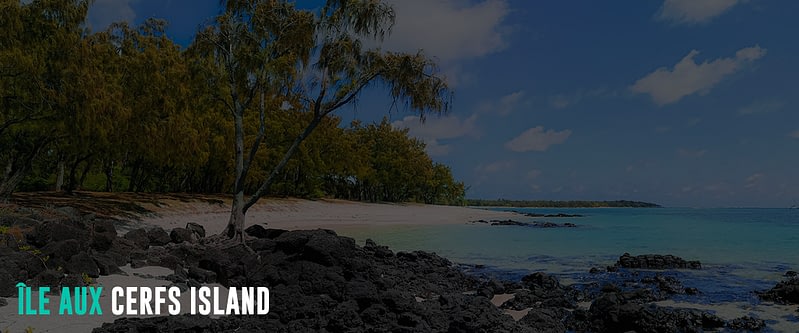
The island of Île aux Cerfs, often known as the deer island, is a popular destination on the east coast of Mauritius in the Flacq area. It is famous for its sandy beaches, lovely lagoon, and wide range of water activities and services. Visitors may spend the day relaxing and having fun on one of the picture-postcard beaches, swimming, and snorkeling in the lagoon. Its coral reef is beautiful and full of marine life. With the large black rocks that protrude into the water, Île aux Cerfs is an ideal place to snorkel and enjoy the rich underwater world.
In addition, the island also boasts an 18-hole golf course.
Ile aux Aigrettes (Egret Island)
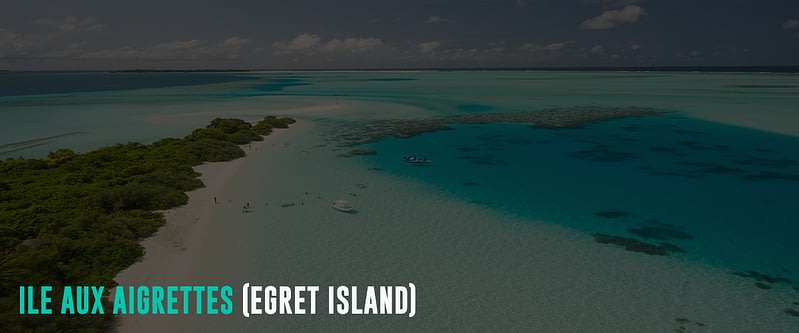
Ile aux Aigrettes is an islet off the southeast coast of Mauritius. The islet is formed from coral limestone, is a nature reserve and a scientific research station, and is also a popular destination for visitors. Moreover, the island is home to the world’s only remaining piece of “Mauritius Dry Coastal Forest,” a once plentiful vegetation type. Likewise, it is also home to many extremely rare or endangered species of plants and animals.
Like its mainland, logging and invasive species devastated the indigenous flora and fauna in Ile aux Aigrettes over several hundred years, causing the extinction of species such as the Dodo and the indigenous giant tortoise. As a result, the island was declared a nature reserve in 1965, and intense conservation followed. It is to restore the vegetation and remaining indigenous animal species. It also reintroduced several other species that had disappeared from the island but survived elsewhere in Mauritius.
Today, Ile aux Aigrettes is home to several reptile species. It includes a non-indigenous Aldabra giant tortoise and the rare, endemic ebony tree species Diospyros egrettarum, named after the island.
Grand Bassin
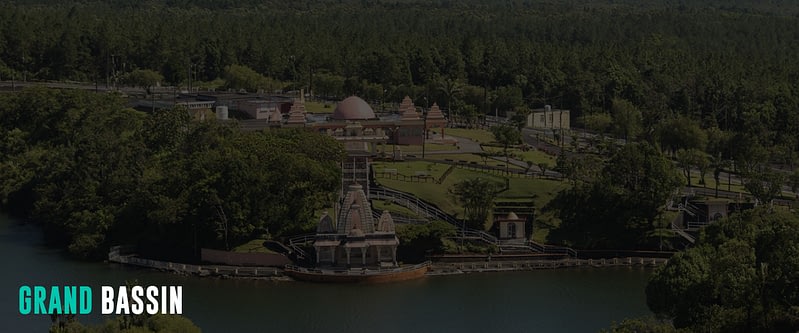
Grand Bassin, or Ganga Talao, is a sacred Hindu lake in a secluded mountain in Savanne, Mauritius. Located about 550 meters above sea level, the lake is believed to communicate with the waters of the holy Ganges in India. Every year, on the occasion of Maha Sivaratri, the Hindu community performs a pilgrimage to Grand Bassin to honor Lord Siva. A temple dedicated to Lord Shiva and other gods, including Hanuman and Lakshmi, is beside the lake. In addition, the statue of Mangal Mahadev, a 33-meter-high statue of Lord Shiva, overlooks the lake. Grand Bassin is the most prominent place of worship in Mauritius, and the pilgrimage is a beautiful mountain trek that offers lovely views.
Le Morne Brabant
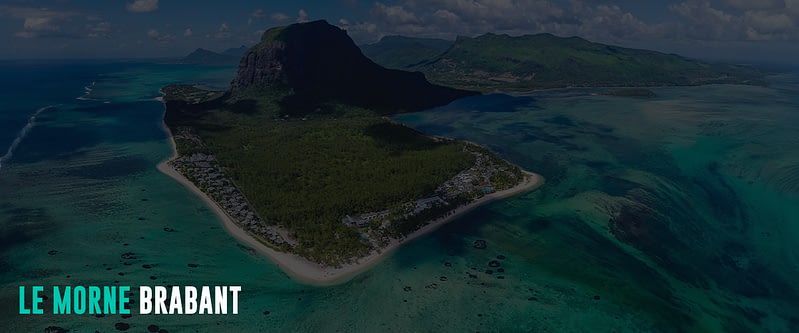
A UNESCO World Heritage Site, Le Morne Brabant is a mountain in the southwest of the island with a rich history and cultural significance. The highlight of Le Morne is a basaltic monolith rising at 556 meters, with plenty of caves on its slopes. Surrounding it are lagoons and pristine beaches on the island with four kilometers of almost deserted white sand. The public beach at Le Morne provides the perfect location to relax in privacy, far from the cities and crowds. Furthermore, the beach is also home to endemic species of plants, while Le Morne Brabant is a popular destination for hiking enthusiasts in Mauritius.
Eureka House
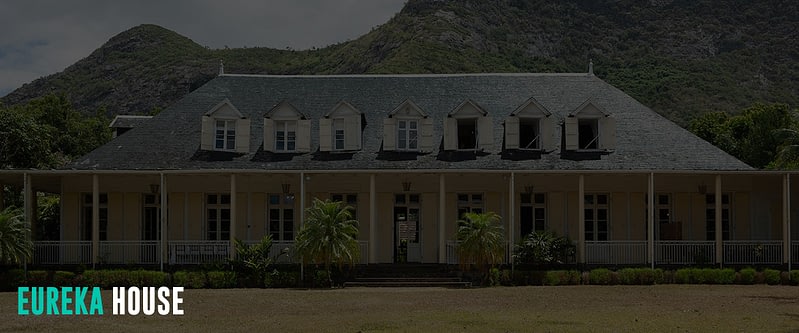
Eureka House is a historic Creole mansion dating back to 1830. It is in a lush garden with waterfalls in the Moka River and the Moka Range. The villa is known for its unique architecture, boasting 109 doors and windows.
The Eureka House was renovated and opened publicly as a museum in 1986. It features exhibits of music, art, antique maps, Chinese and Indian housewares, and colonial-era contraptions like a shower. The mansion also features a collection of period furniture imported by the French East India Company. The estate’s courtyard includes manicured grounds and stone cottages that were once the servants’ quarters and kitchens.
As one of the island’s largest houses, the Eureka House provides insight into Mauritius’ vibrant plantation and colonial past. Hence, a must-visit for history buffs. Visitors can also follow a trail from the mansion to reach the beautiful Ravin waterfall.
Primary Spoken Language(s)
Most Mauritian population is multilingual, with Mauritian Creole as the mother tongue and English and French as the de facto official language. Also, English and French are the language of government administration and business and are favored in education and professional setting.
Safety Concerns
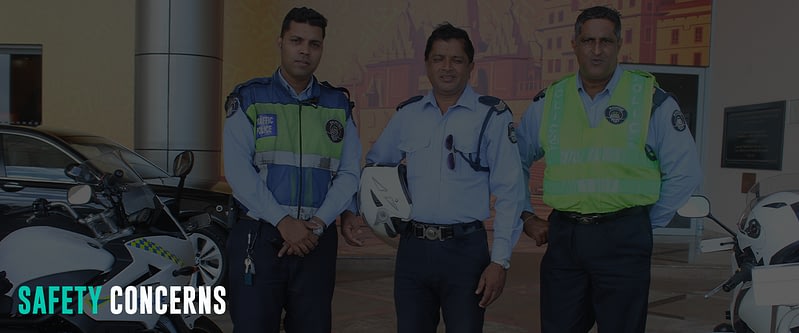
Mauritius is a safe tourist country, ranking 28th out of 163 countries on the 2022 Global Peace Index. Also, Mauritius has a Level 1 Travel Advisory from the US Department of State. However, travelers in Mauritius should take the basic safety precautions a foreigner must take when exploring a new country.
Although the crime levels in Mauritius are low, petty crimes like pickpocketing and bag snatching still occur. So, do not leave things unattended, and keep your purse out of reach in public places. Additionally, avoid carrying a large sum of cash and displaying jewelry and other valuables during sightseeing. Finally, avoid walking alone in poorly lit places when going out at night.
In shops, request the price of products before any purchase. Also, ask for receipts for any critical transaction.
Look for duly registered and licensed accommodations, taxis, and other service providers. It is to ensure that safety measures are put in place as required. Look for taxis with the name of their operating base on the door, and negotiate the price before getting in. Also, refer to the website of the Tourism Authority for the list of registered accommodations and guesthouses in Mauritius. Lastly, please remember that Pleasure Crafts bearing a “PC” registration number are meant for commercial purposes.
In an emergency, dial 999 or 112 for police, 995 or 115 for fire, 114 for an ambulance, 152 for tourist information, and 171 or 96 for weather and cyclone reports.
Natural Hazard
Keep in mind that Mauritius is vulnerable to cyclones from November to May. However, typhoons can still happen at any time. Hence, check weather advisories before going out sailing or doing water activities. Also, monitor media sources and follow the advice of local authorities.
Budget Considerations
Mauritius is a leading luxury destination with world-class resorts around the island. So naturally, this leads to the impression of an expensive destination for travelers. But with careful planning and advanced booking, it is still possible to enjoy the tropical haven of Mauritius without breaking the bank.
Accommodation
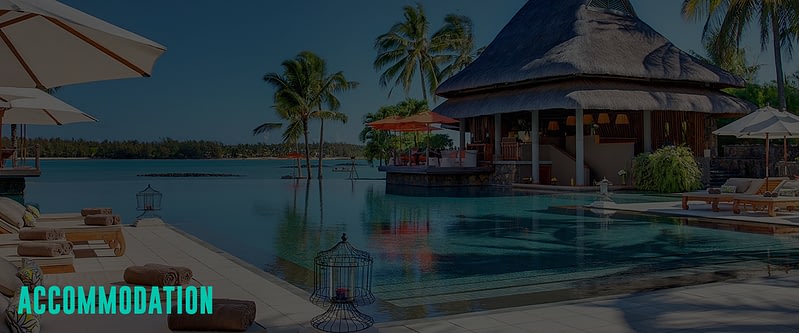
There are not many hostels in Mauritius. So, travelers on a budget must book ahead to get cheaper accommodations. Depending on the location and travel season, travelers to Mauritius can get a private room between $12 – 30 per night, including a complimentary breakfast. Another cheap accommodation option in Mauritius is staying in guesthouses and budget hotels from $25 to $40. Airbnb is also widely available for as low as $30 for an apartment and about $110 for an entire villa. Moreover, average travelers can opt to stay in hotels, from $50 for a three-star hotel and $250 for a five-star hotel and resort.
Please note that wild camping in Mauritius is free and legal! There is no need for a permit or anything else, but it is not advisable to do this during the cyclone months between December to March.
Food
Foods in Mauritius are deliciously cheap and diverse, with influences from African, Indian, Chinese, and European cuisines. Budget travelers can get a bowl of fried rice and noodles for $1.50 and biryani for $3.80 from street food stalls. Another cheap meal option is dining in local restaurants where a visitor can get meals between $5-10. Expect to pay over $30 in high-end restaurants and resorts.
Attractions and Transportation
Beaches and most attractions in Mauritius are free to visit. Likewise, admission to the Black River Gorges National Park and most museums are free. But expect to pay between $50-70 for activities like a sailing cruise, scuba diving, and a group surfing lesson.
Traveling by bus is the best way to get around Mauritius. Depending on the distance and whether it has air conditioning, a one-way bus ticket ranges between $0.40 to $1.10. Travelers can also rent a car for as low as $34 daily to visit some of the attractions which are not accessible by bus. A cheaper rental option for budget travelers is scooters or motorbikes from $14 daily.
Average Two-Week Cost
Budget travelers can live with a $50 daily budget or $700 for two weeks. The budget covers the costs of staying in hostel rooms with complimentary breakfast or shared kitchen facilities, eating cheap meals, taking public buses and metro destinations, and mainly doing free activities.
On the other hand, mid-range travelers spend at least $120 daily or $1680 for two weeks. It includes staying in a three-star hotel, taking the metros and taxis, dining in local restaurants, and doing paid activities like scuba diving, sailing, and surfing lessons.
Lastly, travelers can enjoy luxury and privacy in the Cook Islands for $400 daily or $5600 for two weeks. It includes staying in five-star hotels and beachfront villas, splashing out on meals, taking domestic flights and renting a car for transport, and availing of all the paid tours and activities they want. So for them, the sky is the limit for travel.
Customs And Import Restrictions
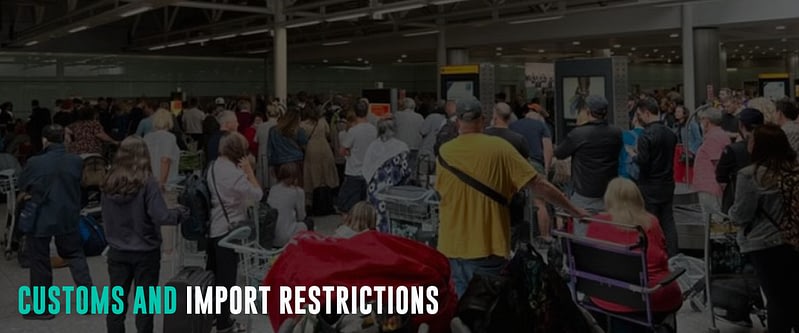
All passengers entering Mauritius can wear apparel and other personal effects free from duty tax. Travelers can also import the following duty-free items to Mauritius until December 31, 2023:
- 200 cigarettes or 100 cigarillos or 50 cigars, or 250g of tobacco (for 18 years and above)
- 2L of spirits, 6L of wine, ale, or beer; 5L of spirits; or 10L of wine, ale, or beer (for 18 years and above)
- Implements, instruments, and tools for the professional use of the passenger
- One sporting fire-arm with not more than 50 cartridges provided that it will be re-exported within the prescribed period. Otherwise, it will be liable to duty and taxes.
Moreover, travelers arriving in Mauritius are entitled to a duty-free allowance for goods other than tobacco, alcohol, arms, and ammunition as follows:
| Arriving from | Nationality | Age | Duty-Free Allowance |
| Rodrigues | Mauritian / Foreign | 12 years and above | $430 (20,000 MUR) |
| Rodrigues | Mauritian / Foreign | Below 12 years old | $215 (10,000 MUR) |
| International Flight | Mauritian | 12 years and above | $646 (30,000 MUR) |
| International Flight | Mauritian | Below 12 years old | $323 (15,000 MUR) |
| International Flight | Foreign | No age limit | $323 (15,000 MUR) |
Restrictions and prohibitions are implemented on imports of specific goods and must be declared to customs before entry. It includes:
- weapons, agricultural products, articles, wildlife products, pharmaceutical products, or illicit drugs;
- goods for commercial, business, or trade purposes;
- Cash, checks, money orders, precious stones and metals, goods, diamonds, and jewelry, or any goods of high value, including works of art exceeding 500,000 MUR (around $10,872).
Visit the Mauritius Revenue Authority for Customs portal for the complete list of import restrictions and prohibitions when planning your trip.
Tax Refund
Foreign visitors and departing Mauritians can enjoy up to 15% savings when they shop across the country in over 1000 registered tax-refund stores. Tourists can claim a VAT refund directly from registered shops displaying the Tax-Refund logos. Travelers can also claim immediate cash refunds in Euro (EUR), British Pound (GBP), US Dollar (USD), and South African Rand (ZAR) at the airport before departure. On the other hand, cruise ship visitors should inquire with their captains whether Tax Refund facilities will be provided on departure from Mauritius.
Climate Considerations
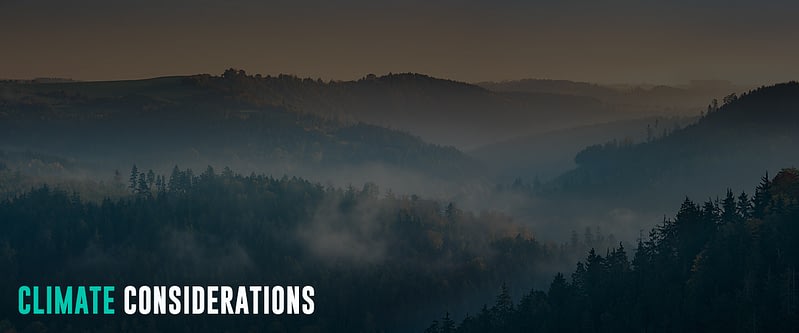
The island country of Mauritius enjoys a pleasant climate with a mild temperature all year round. It experiences only two seasons: summer from October to April and winter from May to September at an average temperature of 22 ºC. Heat maxima with high humidity occur between December and February, whereas the lowest temperatures and strongest winds occur between July and September. Generally, the rainy season is in February, while July and August come with strong winds for the maximum pleasure of sailing and surfing enthusiasts.
Because of its topography, there is a significant climate variation between Mauritius’s coastal and central parts. The coastal regions are warmer and less rainy, while the central plateau has a cooler and more humid temperature. Meanwhile, the west and north of the island are the warmest and most sheltered, while the east is prone to the southeast trade winds all year. Additionally, the climate in the country’s eastern regions is mild and pleasant in the summer, cooler and more robust in winter. Because Mauritius is in the tropics, it is vulnerable to cyclones throughout the summer from November to May. Luckily, it is frequently spared by storm paths.
Primary Transportation Options

Getting around Mauritius is easy, with several options by air, water, and land for travelers!
Air
There are only two airports in Mauritius: Sir Seewoosagur Ramgoolam International Airport in Mauritius Island and Sir Gaëtan Duval Airport in Rodrigues, the nation’s island dependency. Also, the country is served by several international airlines, with Air Mauritius as the national carrier. Air Mauritius flies to over 30 regional and international destinations with 80 weekly flights and is based at Sir Seewoosagur Ramgoolam International Airport.
Boats and Cruises
The government-owned Mauritius Shipping Corporation, Ltd. operates regular ferry services between Port Louis and the neighboring islands of Rodrigues and Reunion. They also offer tourist ferry services, such as the Catamaran Cruise to Ile aux Cerfs. Moreover, several other companies provide catamaran cruises around Mauritius.
Bus
The bus network system in Mauritius is affordable and pretty efficient, connecting all major towns and villages. Depending on the distance and whether the bus has air-conditioning or none, a one-way ticket varies only between $0.40 and $1.10. Hence, traveling by bus is the best way to save money around Mauritius.
Check out this website for all the bus routes when planning your itinerary in Mauritius.
Light Rail System
The Mauritius Metro Express light rail system has been operational since September 2019. It covers the routes between Curepipe – Port Louis, stopping along seven stations, and Port Louis – Rose Hill, passing through 12 stations. Like the country’s bus system, the Metro Express is affordable between $0.25 and $1.50 for a one-way ticket.
Taxi
Taxis are widely available in Mauritius. But note that they are not metered. It is also important to note that registered taxis have the name of their operating base on the door. Hence, travelers must negotiate the price with the driver before getting in.
Travelers can also choose a private or shared taxi at a cheaper cost.
Car Rental
Car rentals are the best option to explore the attractions in Mauritius, which are not accessible by bus. Depending on the type of car and model, travelers can rent a vehicle for as low as $34 daily for a multi-day rental.
Scooter and motorbike rentals are also widely available for around $14 daily for a multi-day rental. Moreover, getting around the islands by scooter is convenient and fun.
Lastly, they must note that they drive on the left-hand side of the road.
Start Trip Planning
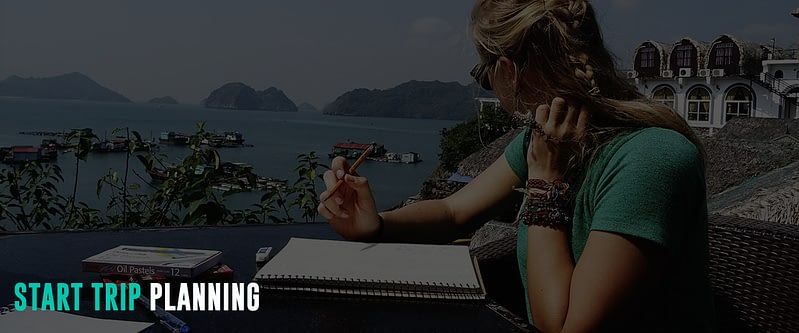
Travel-Wise is made from the ground up to help people travel more, break down the barriers that make it tough to get going, and start your journey as painlessly as possible. Bookmark our other Country Guides to help kick-start your research for future travels. We also offer templated itineraries from our staff and community that help serve as a building block for your trip plans. Alternatively, we also utilize AI to offer a way to generate itinerary ideas. This saves much time just getting you up and running with a template. From there, you can use the trip planner to create your customized itinerary, invite friends and family for collaboration, find others from Travel-Wise to join the trip, book and track important information, journal, and share your experiences at the end or along the way!

